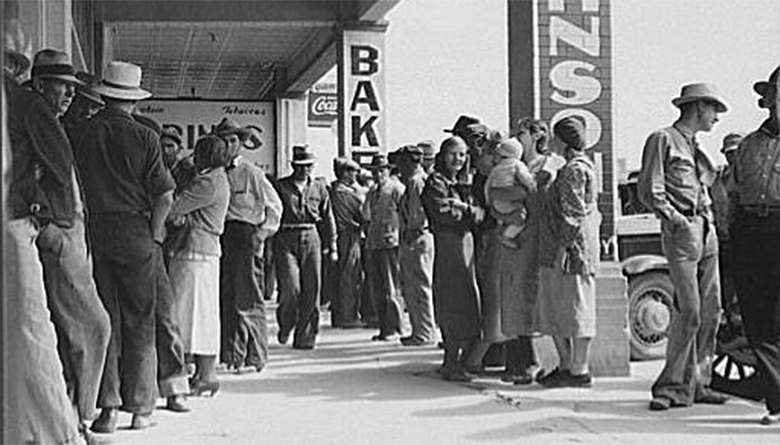| << Chapter < Page | Chapter >> Page > |

The 1990s were boom years for the U.S. economy. The late 2000s, from 2007 to 2014 were not. What causes the economy to expand or contract? Why do businesses fail when they are making all the right decisions? Why do workers lose their jobs when they are hardworking and productive? Are bad economic times a failure of the market system? Are they a failure of the government? These are all questions of macroeconomics, which we will begin to address in this chapter. We will not be able to answer all of these questions here, but we will start with the basics: How is the economy doing? How can we tell?
The macro economy includes all buying and selling, all production and consumption; everything that goes on in every market in the economy. How can we get a handle on that? The answer begins more than 80 years ago, during the Great Depression. President Franklin D. Roosevelt and his economic advisers knew things were bad—but how could they express and measure just how bad it was? An economist named Simon Kuznets, who later won the Nobel Prize for his work, came up with a way to track what the entire economy is producing. The result—gross domestic product (GDP)—remains our basic measure of macroeconomic activity. In this chapter, you will learn how GDP is constructed, how it is used, and why it is so important.
In this chapter, you will learn about:
Macroeconomics focuses on the economy as a whole (or on whole economies as they interact). What causes recessions? What makes unemployment stay high when recessions are supposed to be over? Why do some countries grow faster than others? Why do some countries have higher standards of living than others? These are all questions that macroeconomics addresses. Macroeconomics involves adding up the economic activity of all households and all businesses in all markets to get the overall demand and supply in the economy. However, when we do that, something curious happens. It is not unusual that what results at the macro level is different from the sum of the microeconomic parts. Indeed, what seems sensible from a microeconomic point of view can have unexpected or counterproductive results at the macroeconomic level. Imagine that you are sitting at an event with a large audience, like a live concert or a basketball game. A few people decide that they want a better view, and so they stand up. However, when these people stand up, they block the view for other people, and the others need to stand up as well if they wish to see. Eventually, nearly everyone is standing up, and as a result, no one can see much better than before. The rational decision of some individuals at the micro level—to stand up for a better view—ended up being self-defeating at the macro level. This is not macroeconomics, but it is an apt analogy.
Macroeconomics is a rather massive subject. How are we going to tackle it? [link] illustrates the structure we will use. We will study macroeconomics from three different perspectives:

In thinking about the overall health of the macroeconomy, it is useful to consider three primary goals: economic growth, low unemployment, and low inflation.
As you learn in the micro part of this book, principal tools used by economists are theories and models (see Welcome to Economics! for more on this). In microeconomics, we used the theories of supply and demand; in macroeconomics, we use the theories of aggregate demand (AD) and aggregate supply (AS) . This book presents two perspectives on macroeconomics: the Neoclassical perspective and the Keynesian perspective, each of which has its own version of AD and AS. Between the two perspectives, you will obtain a good understanding of what drives the macroeconomy.
National governments have two tools for influencing the macroeconomy. The first is monetary policy, which involves managing the money supply and interest rates. The second is fiscal policy, which involves changes in government spending/purchases and taxes.
Each of the items in [link] will be explained in detail in one or more other chapters. As you learn these things, you will discover that the goals and the policy tools are in the news almost every day.

Notification Switch
Would you like to follow the 'Macroeconomics' conversation and receive update notifications?